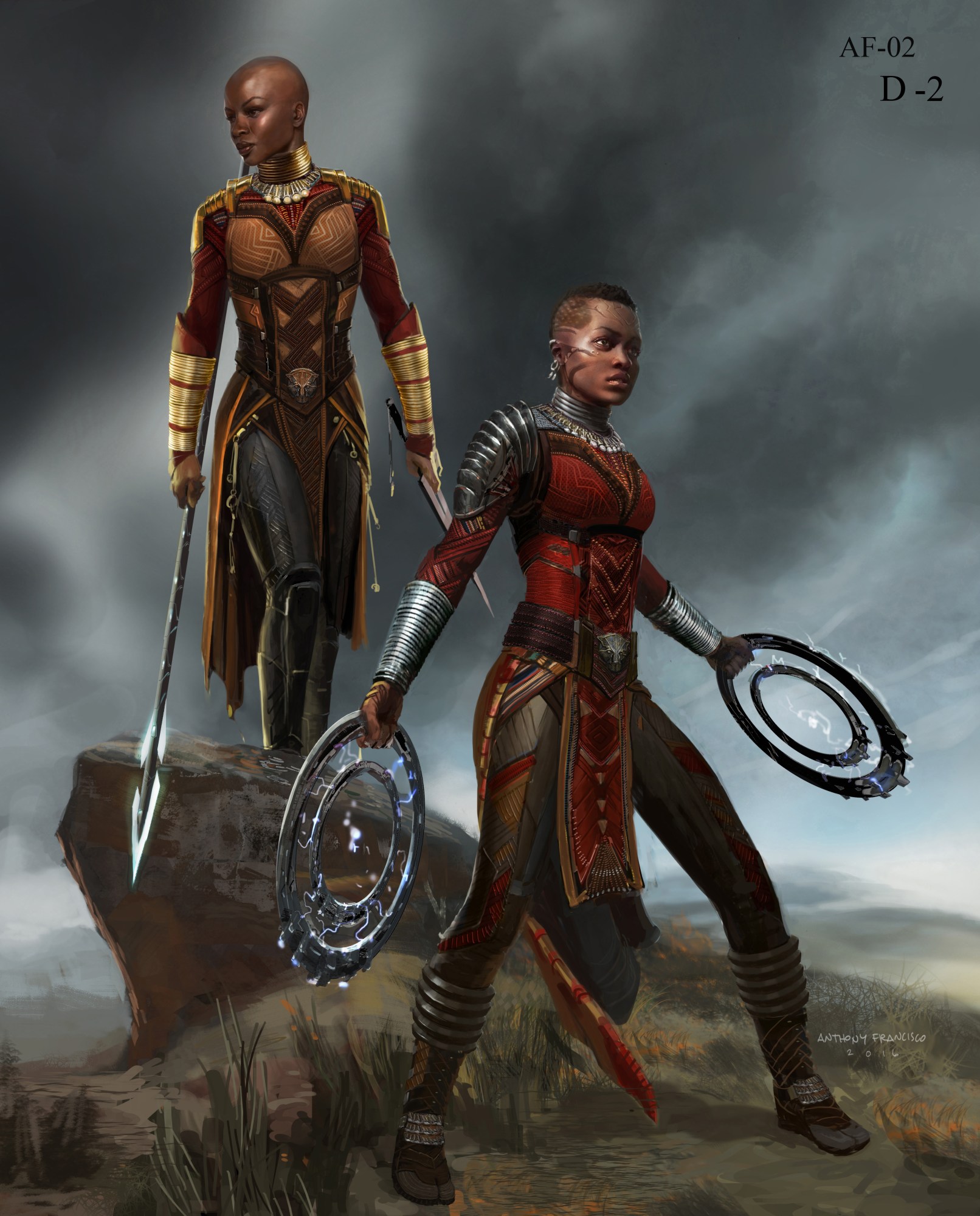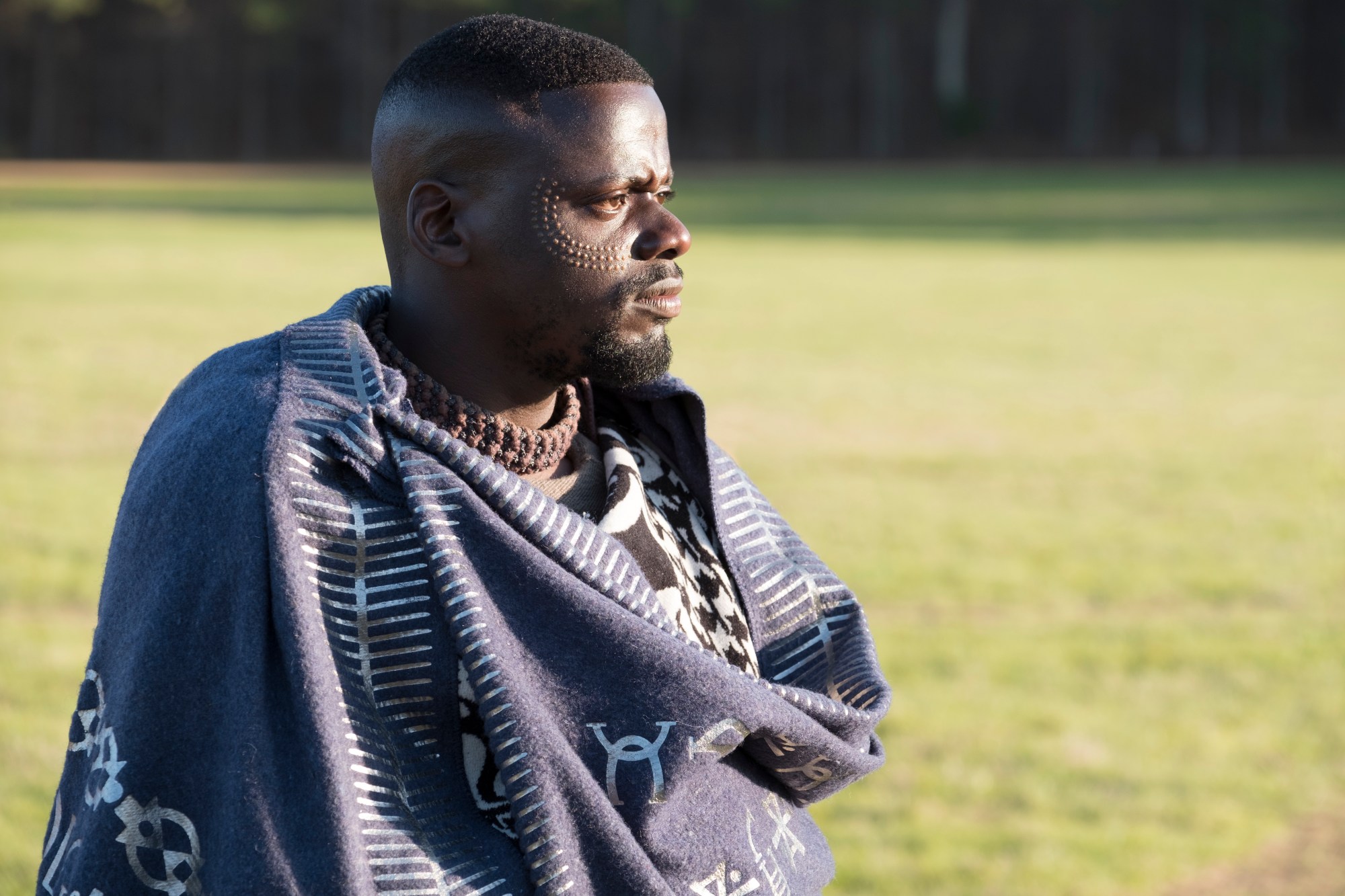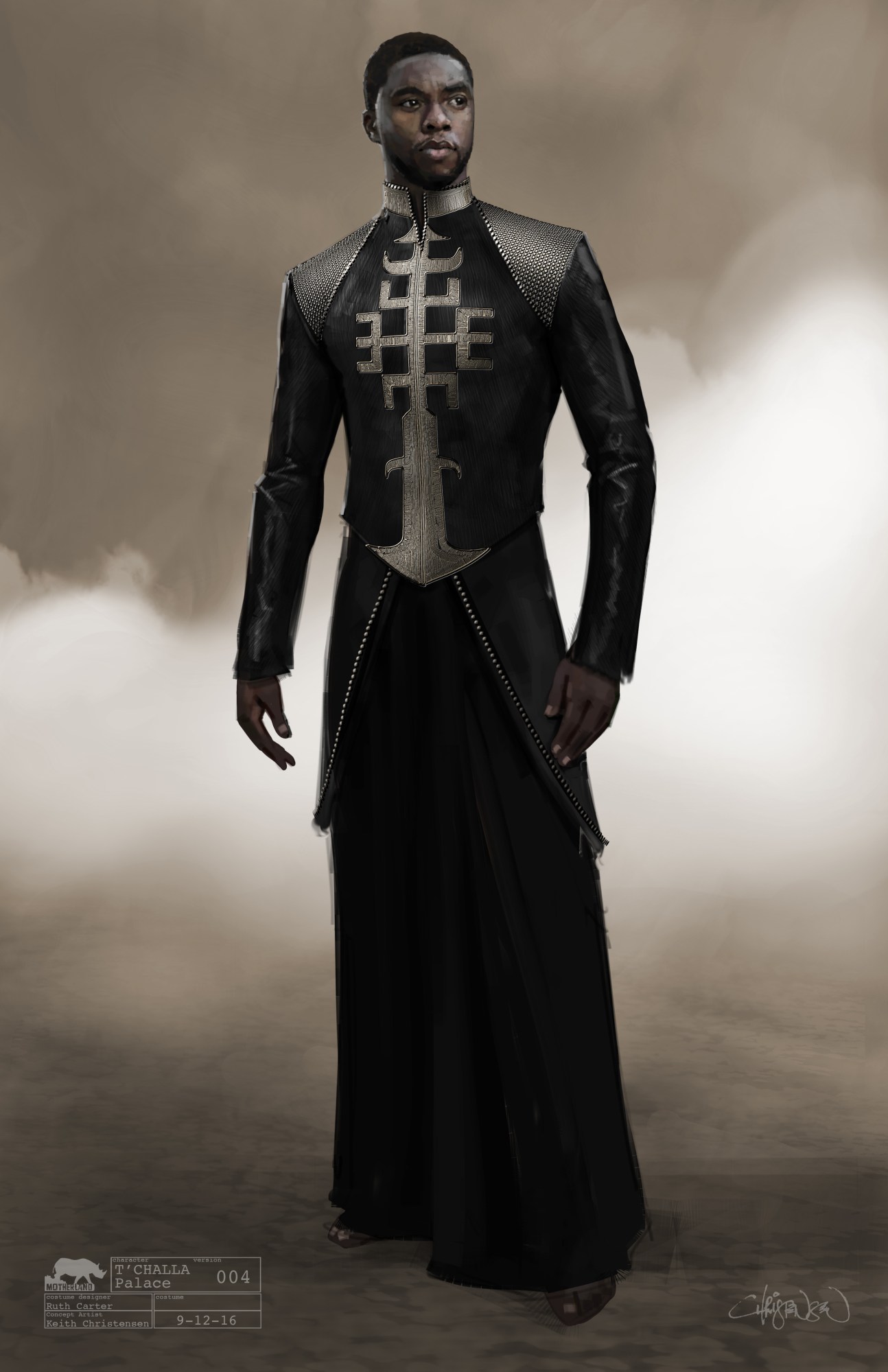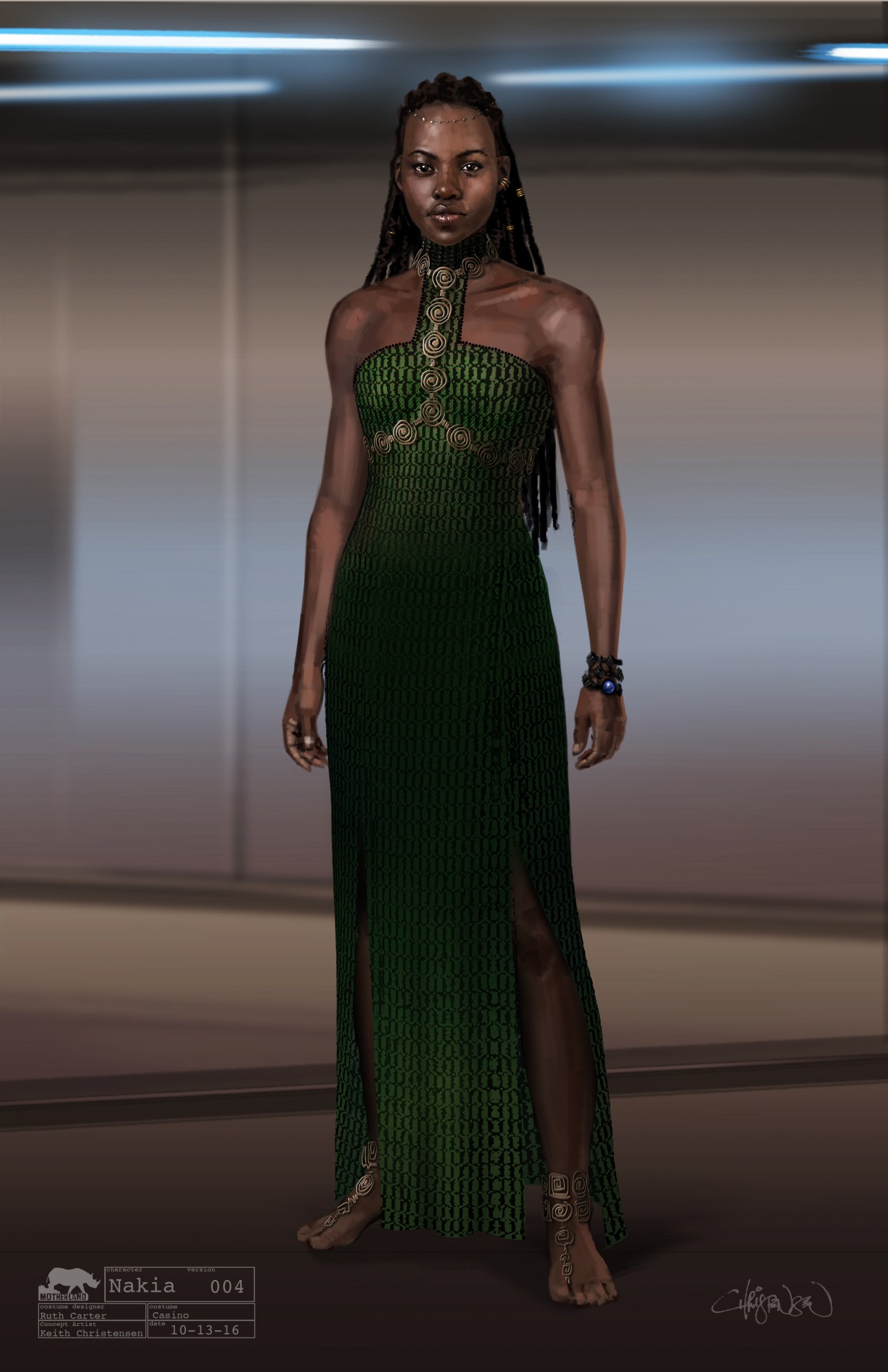A lot of us have the wrong idea of Africa. For one, many look at the continent through a monolithic lens — lumping the hundreds of cultures and languages found there into a single reductionistic narrative. Second, many believe all of Africa is, and always has been, devoid of wealth. That it would be impossible to discover the same kind of splendor and extravagance in its history as in, say, Marie Antoinette’s cinched silk dresses and powdered hair. These prejudices are so pervasive, in fact, that Ruth Carter had to work overtime to educate her team of illustrators about African culture.

“There just hasn’t been enough truth out there to really show the beauty of Africa,” Ruth tells me. “So I had to explain what we were doing to each of my five illustrators.” Ruth made her vision meticulously clear. “I put hundreds of images up on boards,” the black, Massachusetts-born costume designer elaborates with.” If you were sitting in front of your computer, they were right behind it and around your desk. And I had tons of Post-its and arrows and circles for whatever it was the illustrators were working on.” In short, Ruth was not here for misrepresentation.
A centuries-spanning synthesis of references was created for Black Panther’s costumes. Ruth and her team gleaned inspiration from afrofuturism, afropunk, and the fashion of indigenous tribes. This eclectic approach resulted in fabulously ornate outfits. Ramonda, queen of Wakanda, wears dysmorphic, haute couture pieces that definitely would have made Marie Antoinette jealous. One of Ramonda’s most spellbinding outfits is a dove-white ensemble, featuring a sculptural jacket shaped like the moon and a towering traditional Zulu hat. For black viewers, moments like these are refreshing and vital reminders that great artistry courses through our blood. It is a rebuttal against history books that suggest European colonizers “saved” Africans. “We’re looking at a world that exists without colonization,” Ruth says, wonderment in her voice. “I used the traditions, coloring, and adornments that indigenous tribes did and used it in a futuristic way.”

Ruth’s badass creations make it hard to believe this is the first superhero film she’s worked on. However, one look at her resume shows no one was better prepared to dress the big budget spectacle. Think of an iconic “black film.” Ruth probably did the costume design for it. Some of her standouts include: School Daze, Do the Right Thing, What’s Love Got to Do With It, The Butler, Selma, and — my personal favorite — B*A*P*S. “Oh yeah, that was a nice one,” Ruth says nonchalantly when I bring up the delightfully camp film. Starring Halle Berry, the peak-90s comedy featured a host of iconic “ghetto fabulous” looks that can easily be spotted on today’s runways: latex suits, ginormous hoop earrings, and impractically long fake nails. The film and its enduring cultural legacy is yet another example of Ruth’s impeccable forward-looking eye. “We had those outfits specially made,” Ruth explains. “They were so hot, so I had to remake them a few times so Halle could breath. It was the middle of the summer and she was basically wearing a balloon!”

It becomes crystal clear why director Ryan Coogler reached out to the storied costume designer and asked to meet her at Marvel Studios. “I was given some pages out of the comics to look at and a brief description of what we were doing — but no script,” Ruth says, reflecting on the intense hiring process. “Usually, when you go in for a costume design interview, you have a script. But Marvel is like the CIA. So I needed to put together some images based on the information they gave me — which wasn’t a lot.” During the meeting, Ryan didn’t just want to see Ruth’s initial visions of T’Challa’s, Killmonger’s, and Nakia’s combat wear, she says. He wanted to talk. “We had a really great conversation, once I relaxed,” Ruth reflects. “Nate Moore, a Marvel executive, was also present. It just seemed like we all got along.”

High expectations have surrounded Black Panther since the film was announced in 2014. Mainly because it’s the first Marvel film to focus on a primarily black cast. Ruth knew working on the film was a seminal moment for her career, but, remarkably, she wasn’t nervous. “I was not intimidated as much as I knew it was a lot for me to learn,” Ruth says, her voice radiating an inspiring self-assuredness. “I get excited about learning curves. Ryan trusted me to be really smart and knowledgeable about the comics.” Ruth made it her mission to not just recreate African looks for the world of Wakanda — but to also push them into the future.
Ruth used 3D printing to create many of the pieces featured in Black Panther, like Ramanda’s geometrical Zulu hats. “I did that because I thought, since she is a queen, there would be all kinds of things made in the lab for her,” Ruth says of her high-tech creative process. Ruth became enamored with 3D printing right before production started. Julia Koerner, an Austrian architect specializing in 3D printing fashion designs, gave Ruth a presentation on the advanced technology. “It’s a process that takes about six months,” Ruth explains. She relied on a Belgian lab to execute their magic. “It was down to the wire with the hat,” she recounts. “It felt like Christmas when it finally arrived in Atlanta. It was just this beautiful sculpted piece designed by computers and algotherims. Just to see how these pieces come out in this big cube of sugar and you have to chip away to get to them… It’s really beautiful.”

Inspiration also came from traveling across Africa. The Basotho people, an ethnic group of southern Africa, provided crucial inspiration to Ryan Coogler through their distinctive blankets. The brightly colored and patterned fabrics are worn by the mountain people during their day-to-day tasks. In a way, they look like they are cocooning the body. Ryan was inspired to have the Wakandan people use Basotho-influenced blankets as shields during their fights, Ruth tells me. She imported the blankets from Africa and added her recurring futuristic touch by silk-screening silver over them.
The most conversation-starting piece from Black Panther is, of course, the namesake’s midnight-black suit. Marvel fans are passionate about their superheroes, and Ruth says there have been a lot of spilt feelings about the sleeker new suit. “I feel like the fans are torn,” she says. “Some of the fans love the suit he wore in Avengers: Civil War and they want that one back.” Ruth is quick to let it be known she didn’t have any say in axing the Civil War suit. “The suit is totally under the control of Marvel. The design is done by Ryan Meinerding, who is the head of the visual development team at Marvel, and he is a genius. If you look at his art through the years, he is the one responsible for Captain America and the rest of those guys. So he hands me the sketch for the new suit. I looked at it and it was my responsibility to make it come to life.”

Ruth’s genius came into play while figuring out how to make the Black Panther suit tough enough for the biggest challenge of all: long days on set. “The Civil War suit was very dense because it had the vibranium wrapped around it,” Ruth says, explaining why it was impractical to use the suit again. “It wasn’t as easy to move in. This one had to withstand a lot of physical activity. We didn’t have a budget like Civil War where we could make 20 Black Panther costumes. We only had like six and he has a photo double, a stunt double, an acting double.” Ruth turned to eurojersey, a more lightweight fabric. But the suits still had to repaired over and over again once filming started. So Ruth looked for help. “We had to bring out a girl who works for the Boston Ballet,” Ruth says. “She helped us design the gasket that went throughout the suit in order for him to be able to do all his fantastical moves.” Finally, Ruth had her Black Panther suit.

When I ask Ruth if she thinks her grand work on Black Panther will open new doors for her, she talks about getting pigeon-holed by Hollywood. Point blank: many believe a black costume designer can only work on black films. “After you do one black film, you do get boxed in a little bit. You get type casted.” Like many black creatives, Ruth wants to create wider, more versatile avenues in Hollywood for our community. “I wouldn’t mind doing something like Moulin Rouge or a Tom Hardy film. I just don’t get asked!” There’s a remarkable shift in Ruth’s voice in this moment. You can hear the decades of frustration and limitations she has faced. Because let’s remember, seventeen Marvel Cinematic Universe films — largely focused on white characters — were made before Black Panther. Then, Ruth’s mood brightens up. “But I don’t mind being pigeon-holed into black films. It’s not a bad place to be.”
